Media | Articles
I breathed life anew into my 1970 MGB thanks to hard work—and rattle cans
I first saw this MG in The Washington Post classifieds, for $750. My parents took me to meet the owner at a Howard Johnson’s in Arlington, Virginia, and I (or, more precisely, my mom) ended up driving it home.
Through two years of high school and then to college, this was my regular car. I would drive it home and back to Clemson—about 12 hours round trip—for the holidays. When I graduated, though, I started not to use it as much. Career. Life. Eventually, the car was placed in a storage unit in southern Delaware. It sat there for close to 20 years.
I got married nine years ago, and our house had a three-car garage. My wife encouraged me to bring the MG back to New Jersey to get it on the road again. I rented a trailer and got the MG. I had this desire to bring it back to life again; I felt guilty that I had pushed it away.
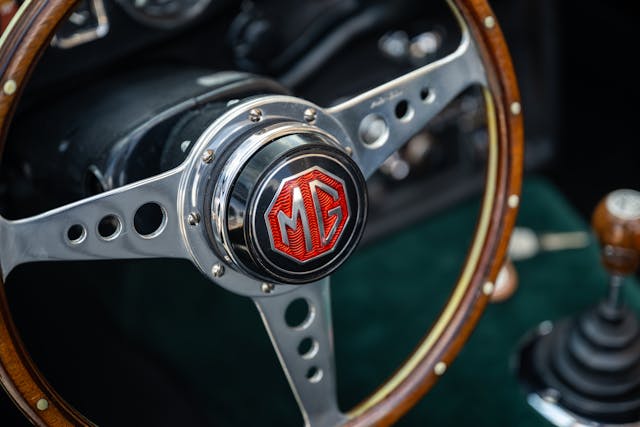
I started slow—small jobs like restoring the steering wheel—but particularly during the early days of the pandemic, I dived deeper. Over time, I replaced everything in the car except the block, the head, and the suspension. After almost two years, the car drove down the street, but the instruments didn’t work. We discovered rain had come through the windscreen seal and had rusted the gauges. A previous owner had chopped up the wiring harness, so now I needed a new electrical harness. I removed the seats to get better access under the dash. I knew I was in trouble when the first fastener I pulled out was a machine screw. I rolled back the carpet, and, lo and behold, I could see the garage floor.
Marketplace
Buy and sell classics with confidence
Then, last year, I got Covid. It caused me to suffer a stroke. I was very fortunate to make it through, knowing that so many people had suffered worse than me during the pandemic. Fortunately, finishing the car became part of my therapy—literally. I would video myself moving nuts and bolts, grinding the floor joints, then I’d show it to my physical therapist. She would say, “Get on your knees,” or “Straighten your back.”
Since I’d gone so far as to redo the floor, I figured I might as well upholster it in style. I was obsessed with green carpet—found in early Jaguars. I found a little shop in England that made green wool carpet for MGBs. When the exchange rate hit $1.08 per pound sterling last year in August, I pulled the trigger.
Obviously, this project had snowballed. My idea at first had been simply to get it running. That morphed into redoing the wiring, then replacing the interior. So… why not paint, too? We started with just a few rattle cans for the front clip, which had a ton of rock chips. That looked so good that, well, we decided to do the whole car. Forty-four cans later (20 base coat and 24 clear coat), it turned out amazing. (Check out the end of the article for more detail on the process.)
It might sound as if I did this whole thing myself, but it’s not like that at all. I never could have gotten this far without the car community. First and foremost is Nick O’Donohoe. I had purchased a few parts from him at an MG show, unaware that he is the son of a British Leyland parts director. Lucky for me, he passed down all of his knowledge to Nick! Nick became interested in the fact that I wanted to do the work myself and helped me with some tougher bits, like welding. He also has a wholesale account with Moss Motors, to serve his business, British Car Company of Wayne, New Jersey.
Most important, though, he held me accountable. “Did you get that done? Can I come tomorrow?” He was like a teacher whom I didn’t want to let down. After I got Covid, when I really needed in my own head to see progress on the car, Nick would bring over three or four members of the Eastern New York MGA Club and spend a Saturday on the car. This gentleman spent countless hours helping me—and he refuses to take money.

There were others. Tim McNair, of GP Concours, the preparation specialist, told me exactly how to polish my paint. Sandra McPhillips at the upholstery shop in the U.K., PJM Motors, where I ordered my carpets, was super nice and helpful. And of course, my wife, Karen, who supported the project from start to finish and who works in automotive PR. After I had my stroke, she put the word out through the local Motor Press Guild to stop by our home and help me work on my car. And then there are the people I’ve never actually met but who were indispensable nonetheless: commenters on the MG Experience online forum and YouTubers.
So now the car is just about done, although it does still need a new front suspension, and the rear shocks are probably kind of on their last legs.
There’s always something else, right?

***
I really painted the whole car with rattle cans
The process is dead simple: prime, paint, and clear. The devil is in the details. For the base coat, don’t just grab a color off the shelf, especially if you’re planning to paint only a section (as I originally planned to). Instead, go to a paint-and-body supply shop and have them custom-mix an exact match to your car. They’ll also have the clear coat you need, the kind with hardener (aka 2K clear). It’ll give you a glassy finish. (Note the hardener produces some nasty vapors, so wear a mask.)
To make it shine like a “real” paint job—and remove debris that falls onto the surface as the paint dries—you’re in for a lot of wet sanding, with progressively finer grit: 3000, 4000, 5000. (I used an inexpensive dual-action sander from Harbor Freight.) Think you’re ready for polish? Nope. Sand more. A paint-thickness gauge can keep you from sanding through. Allow the finish to cure in the sun before polishing out the final swirls.
I learned the hard way not to cheap out on primer—it had a reaction with the base coat. Spraying even strokes takes practice. And the final result, admittedly, isn’t concours-ready. If you want that, pay a pro. But for a car painted outside with rattle cans? You won’t believe how good it can look.
***
Check out the Hagerty Media homepage so you don’t miss a single story, or better yet, bookmark it. To get our best stories delivered right to your inbox, subscribe to our newsletters.
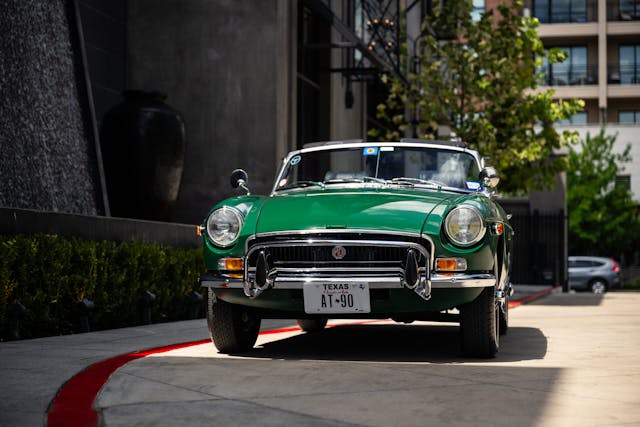









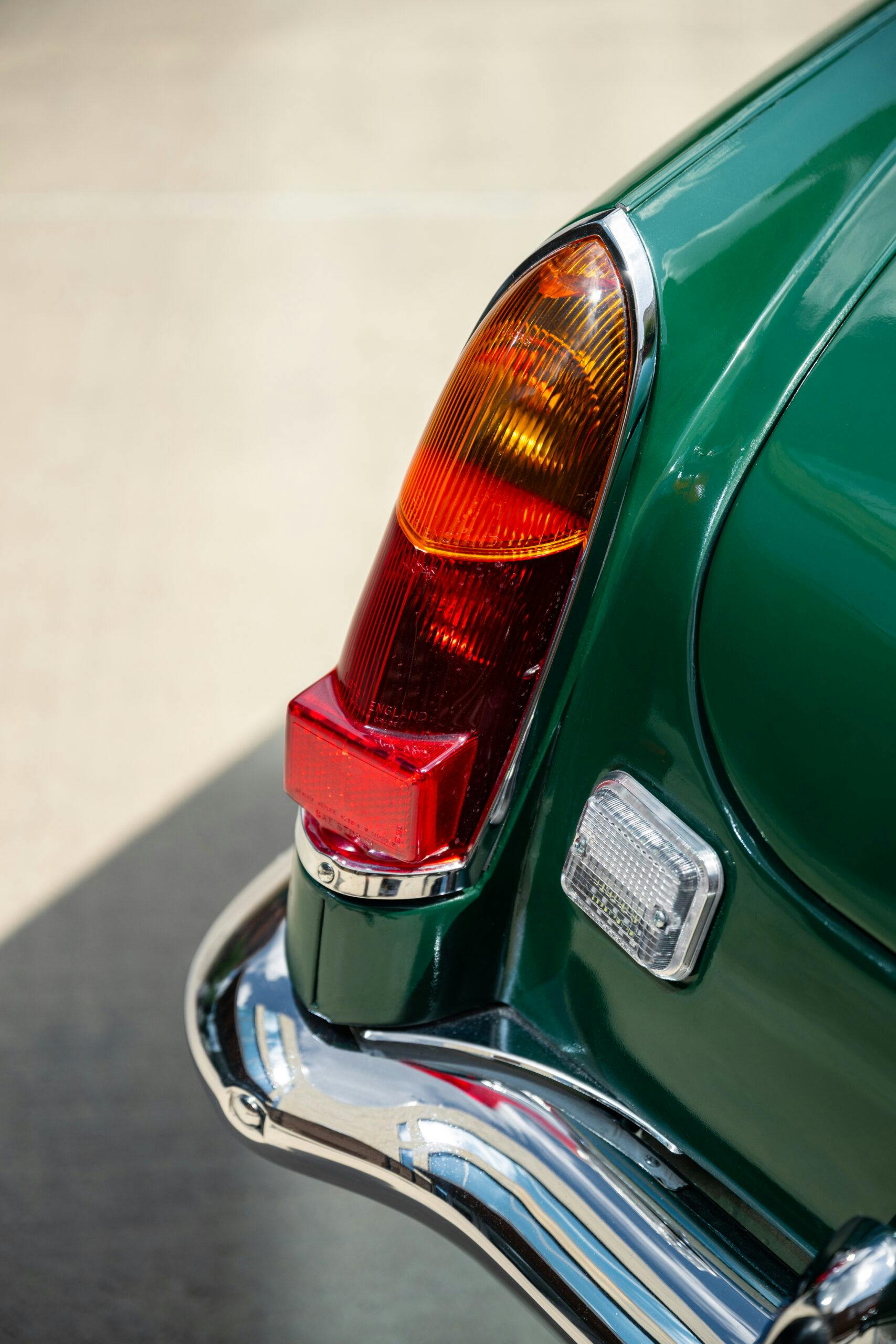
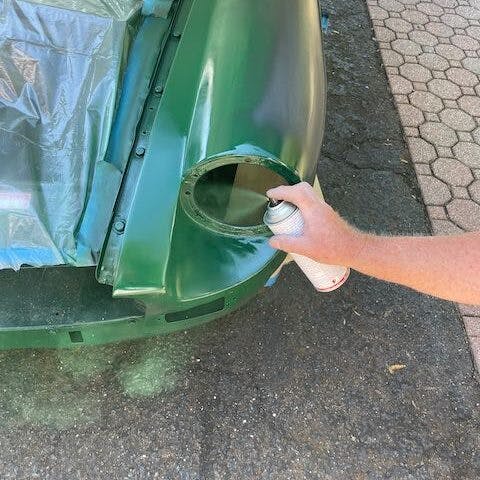
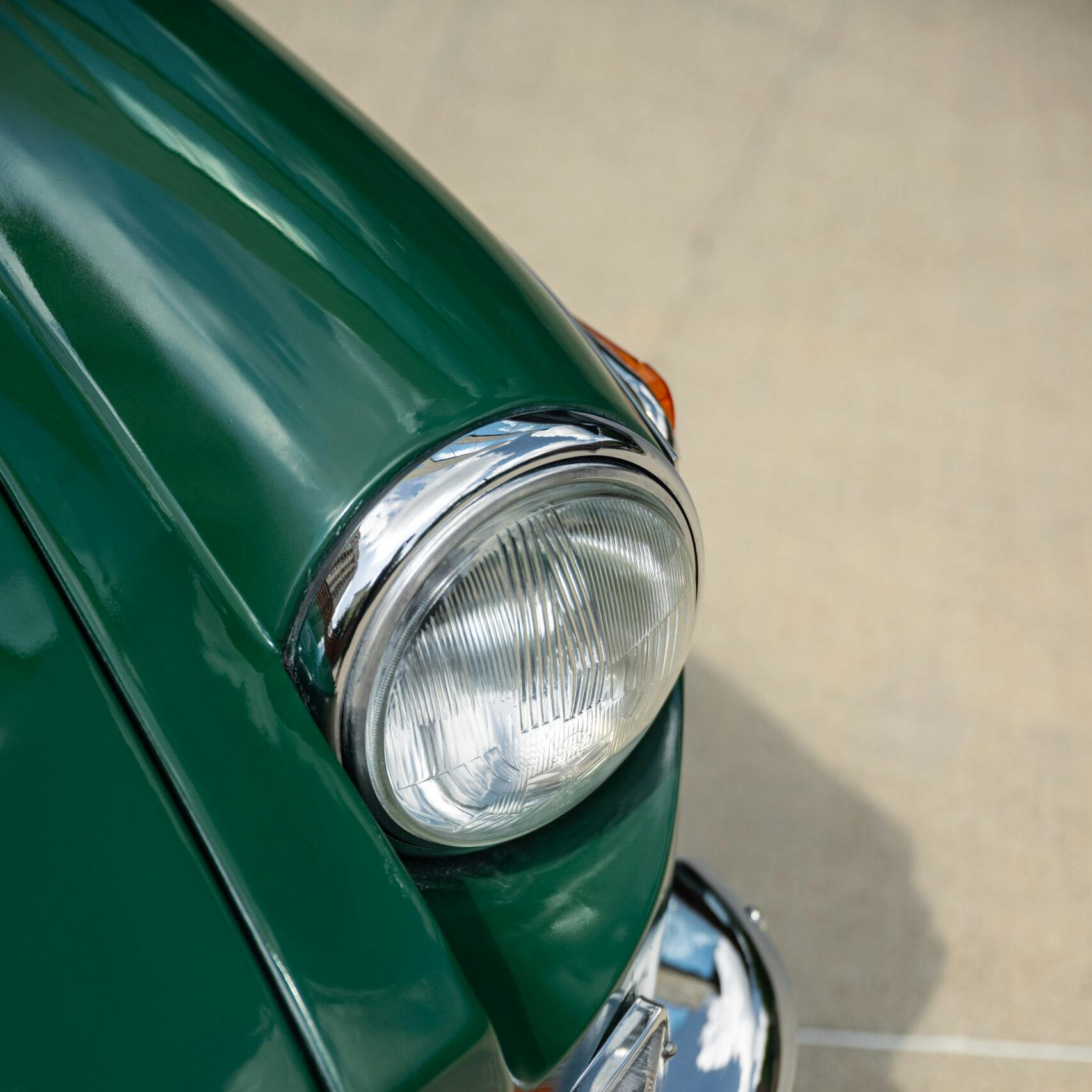









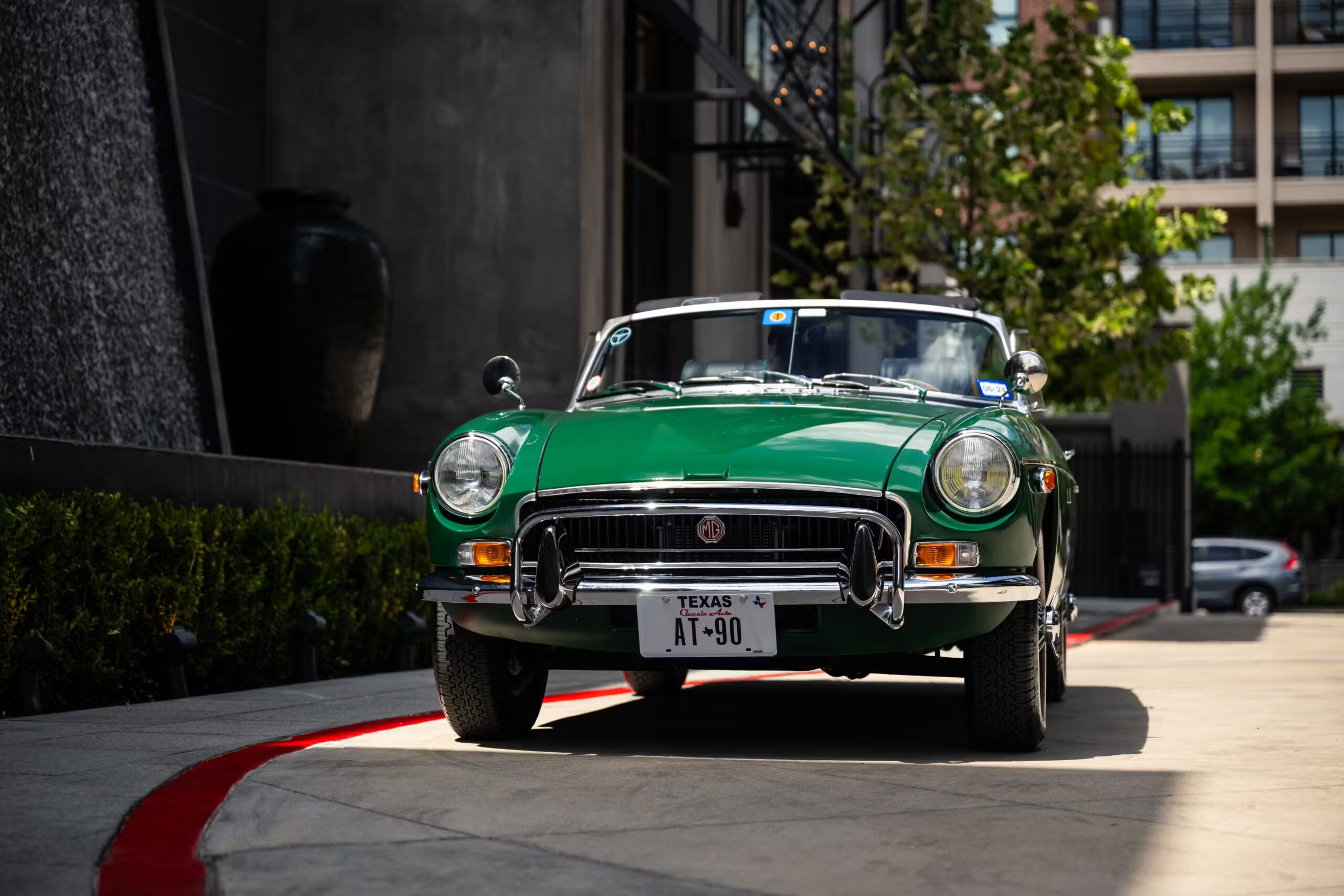
What a great result and fun story. Glad the author had the car to keep him going through dark pandemic times. Kudos!
Great job. What adversity to overcome. I’m about to start a restoration on a 74 B. My first car was a 1970 MGB . I was hooked from the first minute. Really inspiring story. My hats off to both you and your wife.
Congratulations! What a great story. I really miss my 73 B. I have driven Miata’s for many years now but I have my eye on a mid 60’s B sitting in an overgrown lot…..
I wonder how much the cans of paint cost? Of course if you don’t have a compressor and a spray booth you do what you can. I will add you don’t just want a mask, like one of those white things that goes over your mouth, you want the kind that has a soft seal around your face and mouth, a breathing valve (terminology?) and replaceable cannisters filter elements (at least, manufacturers generally recommend a mask with external respirator/air source).
P.S. the car looks great, and is a nice alternative to all the wagging tongues who say you have to invest tens of thousands of dollars to fix up a car.
Kustom Canz rattle cans (https://usa.specialistpaints.com/collections/kustom-canz-custom-aerosol-cans) are $10 using one of their 25 stock base coat colors. So that would be $200 right there. Their 2K clear is $20 a can — another $480. So around $700 just for paint, plus another $200 or so in sand paper and other items? Just under $1000. Plus a whole lot of hours of work — 100-200? If you just want a cheap paint job you’re better off to track down a local economy paint place. Do the initial sanding yourself and strip off everything you can. You can get a decent paint job for under $500. Go with a bit better place like Maaco and you’ll still be under $2000 in most cases. If the car just needs paint and you did most of the prep it should be around $1000. I’ve had three cars done this way over the years, the first by the infamous Earl Scheib (Boise, Idaho, around 1984). I did the prep and body, so their quick wet sand/clean and spray was great. They actually called and said there were some sanding marks showing (where I didn’t do a good enough job) and they wanted to know if they could keep it a few more days and put another coat of paint on. I asked how much, and they said nothing — I did most of the work and made it easy for them, and my 63 Rambler American 440 two door (not hardtop, sedan) would stand out and be great advertising. The other shop I used was an Econo Paint in Warner Robins GA. No free second coat, but they did appreciate me making it easy (just mask glass and tires, everything else was off!) and took extra care with it, and said so!
I am building a 1963 MGB ROADSTER, sounds like about the same shape as yours! I am replacing everything except motor, transmission & rear end! I have repaired a lot of rust but expected that. Doing bodywork and getting ready for paint. I am excited to see the finished product! Love your story!
Fun project. Fun car. I owned a gold 1970 MGB in the late 70’s. The thrill of cold air and snow blowing in the convertible top gaps as I cruised the streets of Saint Louis in January. Sharing my car with my mechanic about a quarter of the time. Oh, but there were plenty of good times. Just happy I had another car as backup.
Neat! You not only overcame the physical challenges, but you produced a very cool car. Happy motoring to you, the Mrs., and Winston! 👍👏
Brilliant work sir, another classic has been saved and the fact that you use it and enjoy driving it gives you and everyone that sees the car a moment of happiness. I used lock down to work on my classics too and found that it helped a lot. Keep going!
OMG!!😯 What an inspiring, and heart warming story!!👌🙂👍🏞🌅🌄🌠 I always wished that I had a special someone, who lives to help me out with my 🚗 “Car” projects too!🌠 My whole family only told me that I was too crazy to invest all of my spare time into fixing up an old car, when I should just get out there and buy a more reliable and newer one!☹️. But, they “NEVER” understood the joy that restoring a more desirable, older vehicle brings to me, when almost everything else in this modern world only brings you down!🙃
I would love to see more pictures and info on how both the bodywork and the rewiring was accomplished though!!🙂👍🏞😯🌄🌠
Christopher, of course your family was right: you ARE crazy to invest time (and money) into fixing up an old car. We’re ALL crazy here, same as you. This is a bunch of crazies, for sure, but here’s the thing – you (and we) get it. This is a GOOD kind of crazy. We all know how fulfilling, rewarding, and fun it is to be this kind of crazy. If you ever feel a little down, just sign onto this site – or go hang out with some other “car nuts”, and you’ll feel better fast. You are a member of a grand and glorious club of crazies who “get” and support you – welcome!
Looks great! We restored a 1972 MG Midget around the same time. I have more in it then a “cheap” new car lol. Enjoy her, I do mine. They are super fun to drive, not to mention the looks from the younger generation that has never seen a car so small.
While the car is great it’s the people who helped that totally enriched the experience, not the least of whom is your wife. Your story reads like a love letter. These projects are not possible without positive support from a life partner. You’re a lucky man, but you know that.
Great story! For some of us there’s way more satisfaction in doing it ourselves than in having a perfect end result. Also I just removed about 75 sheet metal screws from the floor of my vintage VW so I feel your pain there…
Nice to see a car brought back that will be used. I found this story inspiring. Congratulations on a job well done!
What a beautiful MGB and what a great story. My father was an MGB mechanic and I’ve had a ‘67, ‘70, ‘72, and a ‘76. The MGB is forever etched in my heart and wish I had one now.
The car looks good. We are all crazy here!
Used a case of red Hammer-finish Krylon on my 1960 AH Bugeye. Custom-fit spray handle from Home Depot very valuable.All one color, never faded, true “20 footer. $50 custom paint job.